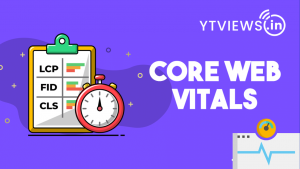The Importance of Core Web Vitals in SEO
Introduction
In the dynamic world of SEO, Google’s Core Web Vitals have emerged as critical metrics for evaluating and ranking websites. These vitals focus on user experience, which is increasingly important in determining search rankings.
What are Core Web Vitals?
Core Web Vitals comprise three key metrics:
1. Largest Concertful Paint (LCP): Measures loading performance. Aim for LCP within 2.5 seconds.
2. First Input Delay (FID): Measures interactivity. Aim for FID under 100 milliseconds.
3. Cumulative Layout Shift (CLS): Measures visual stability. Aim for CLS less than 0.1.
Why Core Web Vitals Matter
1. Enhanced User Experience
Core Web Vitals directly impact user experience. Faster, more responsive, and visually stable sites keep users engaged and satisfied.
2. Ranking Factor
Since May 2021, Core Web Vitals have influenced Google’s ranking algorithm. Sites that meet these metrics are more likely to rank higher in search results.
3. Competitive Edge
Optimizing for Core Web Vitals gives a competitive advantage. Early adopters who prioritize these metrics can see better rankings and user engagement.
4. Reduced Bounce Rates
Improving Core Web Vitals reduces bounce rates. Users are less likely to leave a fast, responsive, and stable site.
How to Optimize for Core Web Vitals
1. Improve LCP:
– Compress images.
– Minimize render-blocking resources.
– Use faster hosting or a CDN.
2. Enhance FID:
– Minimize and optimize JavaScript.
– Use browser caching.
– Load third-party scripts asynchronously.
3. Improve CLS:
– Set size attributes for media.
– Preload important fonts.
– Avoid layout-shifting animations.
Conclusion
Core Web Vitals are necessary for SEO success, reflecting Google’s emphasis on user experience. By optimizing LCP, FID, and CLS, you can grow your site performance, clear user satisfaction, and increase search rankings. using this make sure your site stays competitive in the evolving SEO landscape.
Related Posts

Instagram Implements Advanced Protections for Teen Users.

5 Skills to Become a Successful Social Media Marketer

LinkedIn Adds AI Training Opt-out Option

What Video Editing Software Do Youtubers Use in 2024?

How VoIP Services are changing the Way We Make Calls






































